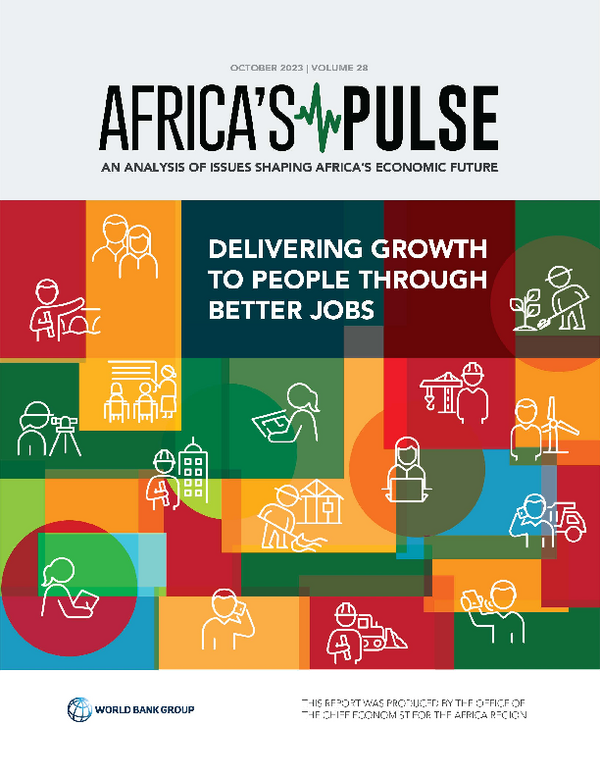 Read this article in French
Read this article in French- Share this article
- Subscribe to our newsletter
Delivering Growth to People through Better Jobs
According to the latest World Bank Africa’s Pulse report, entitled Delivering Growth to People through Better Jobs, rising instability, weak growth in the region’s largest economies and lingering uncertainty in the global economy are dragging down growth prospects in the region. Economic growth in Sub-Saharan Africa is forecast to decelerate to 2.5 per cent in 2023, from 3.6 per cent in 2022. The report was published in October 2023.
In per capita terms, growth in Sub-Saharan Africa has not increased since 2015. In fact, the region is projected to contract at an annual average rate per capita of 0.1 per cent over 2015-2025, thus potentially marking a lost decade of growth in the aftermath of the 2014-15 plunge in commodity prices.
Despite the gloomy outlook, there are a few bright spots. Inflation is expected to decline from 9.3 per cent in 2022 to 7.3 per cent in 2023 and fiscal balances are improving in African countries that are pursuing prudent and coordinated macroeconomic policies. In 2023, the Eastern African community (EAC) is expected to grow by 4.9 per cent, while the West African Economic and Monetary Union (WAEMU) is set to grow by 5.1 per cent. However, debt distress remains widespread with 21 countries at high risk of external debt distress or in debt distress as of June 2023.
Overall, current growth rates in the region are inadequate to create enough high-quality jobs to meet increases in the working-age population. The growth patterns generate only three million formal jobs annually, thus leaving many young people underemployed and engaged in casual, piecemeal and unstable work that does not make full use of their skills. Creating job opportunities for the youth will drive inclusive growth and turn the continent’s demographic wealth into an economic dividend.
The development of labour-intensive manufacturing seems to be missing in Africa, limiting further effects for indirect job creation in support services and international trade. This may be partly due to a lack of capital, which continues to hamper the structural transformation required for good-quality jobs. While the region contributes twelve per cent of the global working age population, Sub-Saharan Africa owns only two per cent of the global capital stock. This means people have fewer assets with which to be productive in Sub-Saharan Africa, compared to other regions.
The report identifies a set of policies to overcome hurdles and unleash job creation in Sub-Saharan Africa, including:
- Cost-effective private sector reforms, focused on increasing competition, uniform policy enforcement across firm sizes and regulatory alignment with regional trading partners. Governments can also help identify and support early-stage growth of businesses through more inclusive procurement practices and promotion of local businesses abroad.
- Investment in education is necessary to boost semi-skilled occupations for the region. Interventions that improve learning in school are more effective than those increasing school attendance alone, while vocational education can be useful for addressing the underemployed and those who have missed out on education as children.
- Education of girls and access to jobs for women can reduce potential productivity loss from the misallocation of female labour. Cash transfers have proven effective in increasing girls' school enrolment and attendance, as well as in curbing pregnancies among school-age girls.
(World Bank/ile)





Add a comment
Be the First to Comment